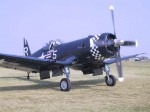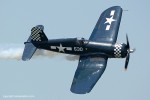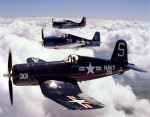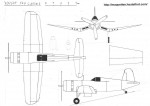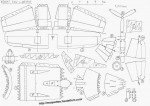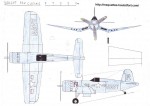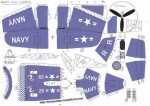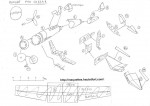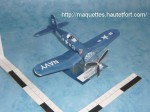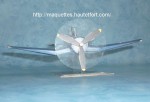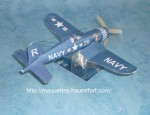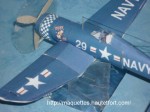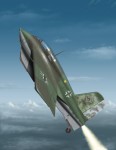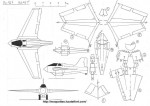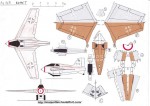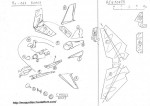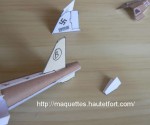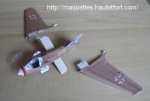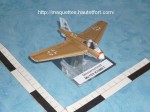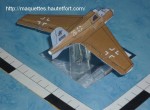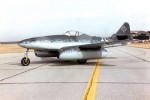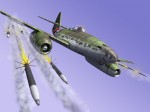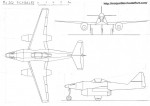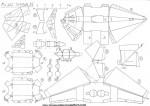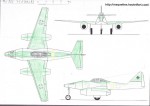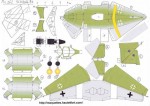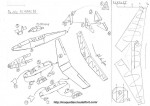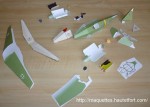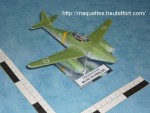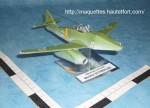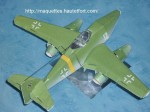Le Chance Vought F4U Corsair est un avion militaire, fabriqué par les États-Unis, utilisé de la Seconde Guerre mondiale jusqu'à 1968. C'est l'un des appareils les plus connus de la Seconde Guerre mondiale, notamment grâce à la série télévisée Les Têtes brûlées. Il s'illustra essentiellement dans le Pacifique, servant à la fois au sein de l'US Navy et de l'US Marine Corps, en dominant les zeros japonais.
The F4U Corsair is a military plane, manufactured by the United States, used the Second World War until 1968. This is one of the most famous aircraft of the Second World War, particularly through the television series Baa Baa Black Sheep. He became famous mainly in the Pacific, serving both in the U.S. Navy and U.S. Marine Corps, dominating the Japanese Zeros.
Pour plus d'infos sur cet appareil voir le lien / For more information about this device see the link:
http://www.avionslegendaires.net/vought-f4u-corsair.php
Pour télécharger le plan 3 vues, des pièces noir et blanc et en couleur et le schéma de montage du F4U Corsair au 1/66 en pdf / To download the 3 sights plan, black and white pieces and in color and the installation diagram of F4U Corsair in 1/66 pdf, CLIQUER ICI
Photos d'une maquette construite en septembre 2010/ Photos of a model built in September 2010
CONSIGNES DE CONSTRUCTION :
- Il n'y a pas de train d'atterrissage sur cette maquette.
- Un fil de fer en travers de la voilure est nécessaire pour donner la forme des ailes.
- Un disque en plastique est mis derrière l'hélice pour une illusion d'hélice tournante.
- L'hélice doit être doublé de carton, en plus du disque en plastique optionnel.
- Les câbles d'antennes radios sont faites en fil noir et les antennes en fil de fer.
BUILDINGS INSTRUCTIONS :
- There is no landing gear on this model.
- A wire across the wing is necessary to give the shape of wings.
- A plastic disk is placed behind the propeller for an illusion of rotating propeller.
- The propeller must be lined with cardboard, in addition to the optional hard plastic.
- Radio antenna cables are made of black wire and antennae wire
